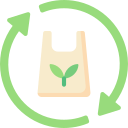Manufacturing Efficiency That Prevents Waste
Upgrading nesting software, training cutters, and segmenting markers by size curves can boost yield significantly. Pair this with on-demand cutting to avoid risky overproduction. Share your before-and-after yield percentages to help the community learn.
Manufacturing Efficiency That Prevents Waste
Inline inspection, standardized work instructions, and mistake-proofing reduce rework, seconds, and scrap. Celebrate defect-free runs and analyze root causes collaboratively. Post your best quality hack, and we’ll compile a shared checklist for subscribers.






